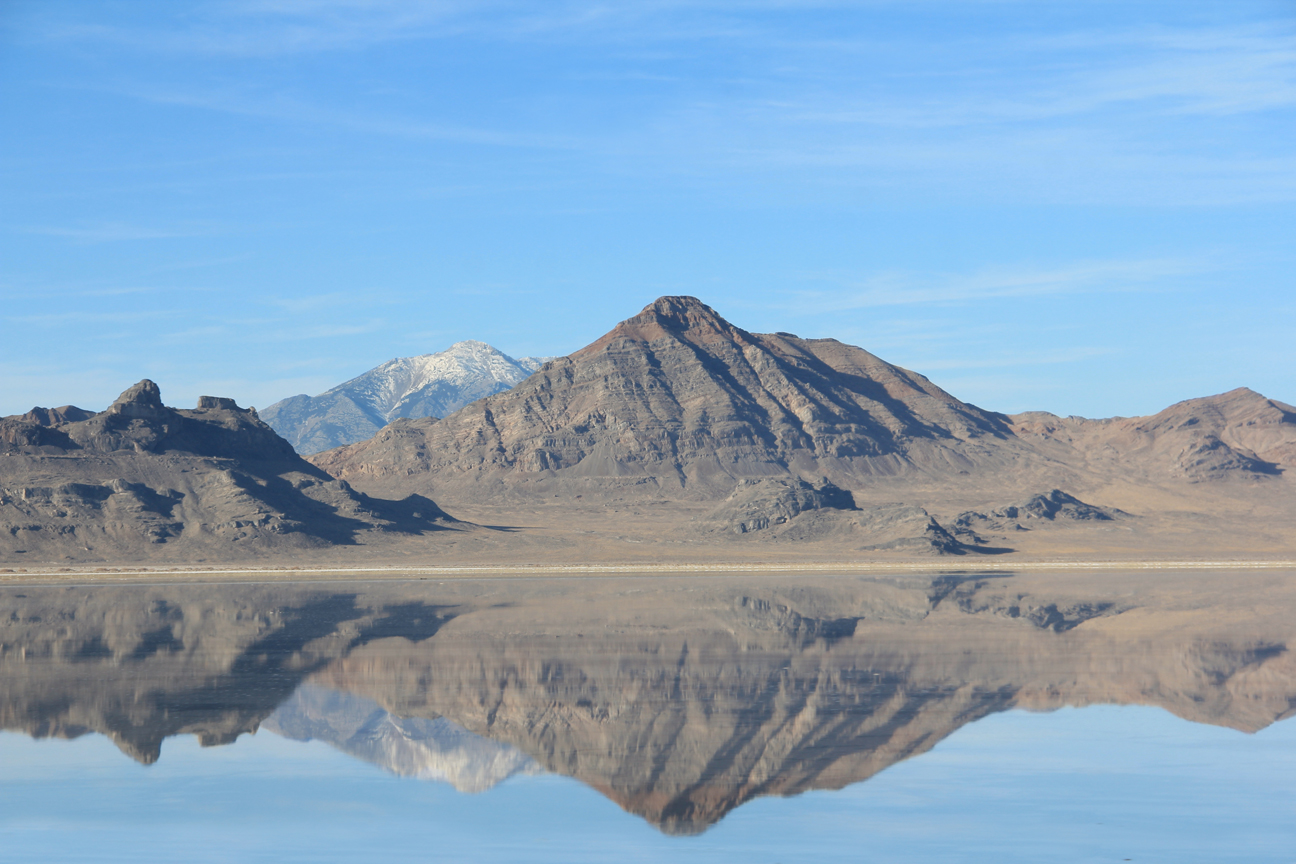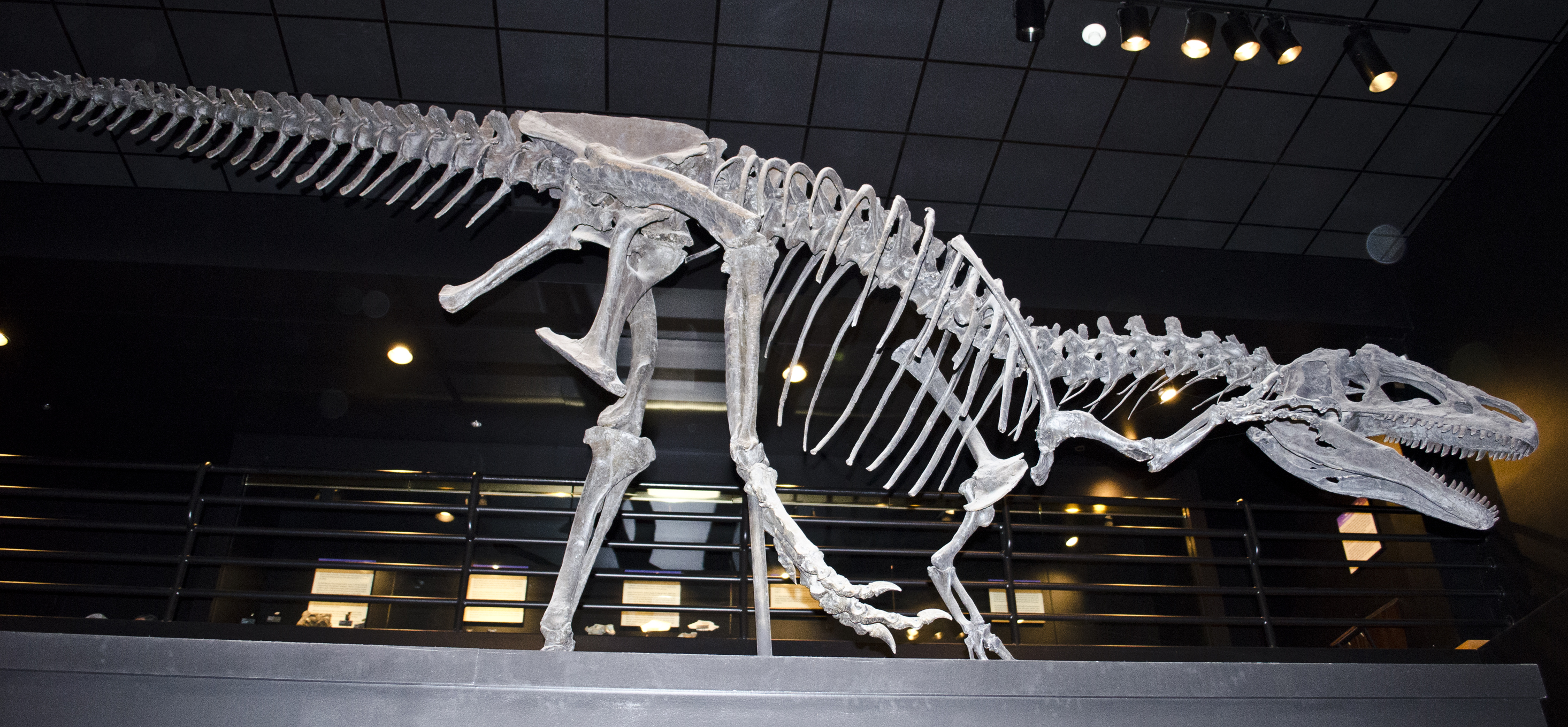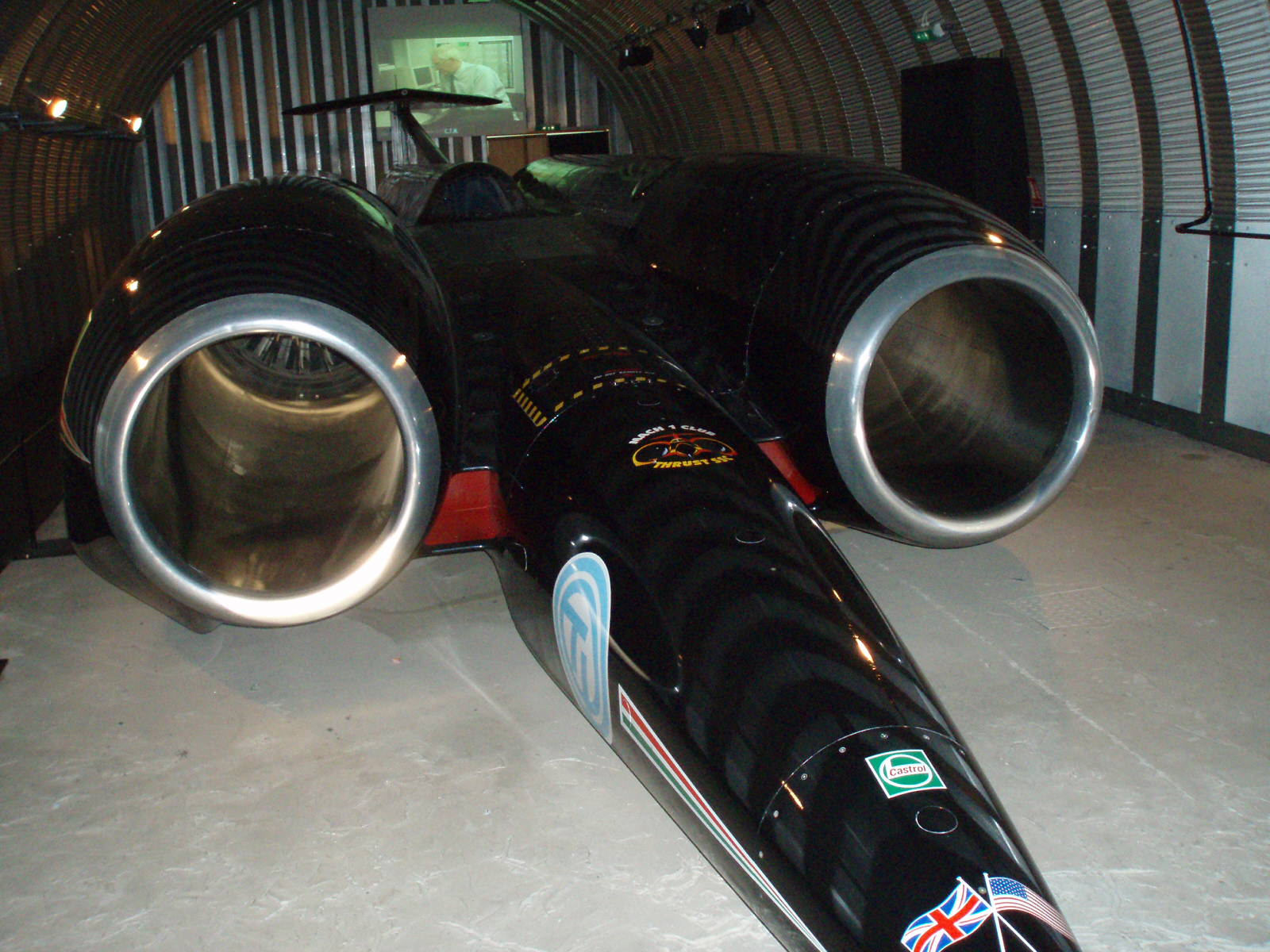|
Bonneville Salt Flats
The Bonneville Salt Flats are a densely packed salt pan in Tooele County in northwestern Utah. A remnant of the Pleistocene Lake Bonneville, it is the largest of many salt flats west of the Great Salt Lake. It is public land managed by the Bureau of Land Management and is known for land speed records at the Bonneville Speedway. Access to the Flats is open to the public. The Flats are about 12 miles (19 km) long and 5 miles (8 km) wide, with a crust almost 5 ft (1.5m) thick at the center and less than one inch (2.5 cm) towards the edges. It is estimated to hold 147 million tons of salt, approximately 90% of which is common table salt. History Geologist Grove Karl Gilbert named the area after Benjamin Bonneville, a U.S. Army officer who explored the Intermountain West in the 1830s. In 1907, Bill Rishel and two local businessmen tested the suitability of the salt for driving by taking a Pierce-Arrow onto its surface. A railway line across the Flats was completed in 1910, ma ... [...More Info...] [...Related Items...] OR: [Wikipedia] [Google] [Baidu] |
Sunset
Sunset, also known as sundown, is the daily disappearance of the Sun below the horizon due to Earth's rotation. As viewed from everywhere on Earth (except the North and South poles), the equinox Sun sets due west at the moment of both the spring and autumn equinoxes. As viewed from the Northern Hemisphere, the Sun sets to the northwest (or not at all) in the spring and summer, and to the southwest in the autumn and winter; these seasons are reversed for the Southern Hemisphere. The time of sunset is defined in astronomy as the moment when the upper limb of the Sun disappears below the horizon. Near the horizon, atmospheric refraction causes sunlight rays to be distorted to such an extent that geometrically the solar disk is already about one diameter below the horizon when a sunset is observed. Sunset is distinct from twilight, which is divided into three stages. The first one is ''civil twilight'', which begins once the Sun has disappeared below the horizon, and continues until ... [...More Info...] [...Related Items...] OR: [Wikipedia] [Google] [Baidu] |
Grove Karl Gilbert
Grove Karl Gilbert (May 6, 1843 – May 1, 1918), known by the abbreviated name G. K. Gilbert in academic literature, was an American geologist. Biography Gilbert was born in Rochester, New York and graduated from the University of Rochester. During the American Civil War, he was twice listed for the draft, but his name was drawn neither time. In 1871, he joined George M. Wheeler's geographical survey as its first geologist. Rockies geologist He then joined the Powell Survey of the Rocky Mountain Region in 1874, becoming Powell's primary assistant, and stayed with the survey until 1879. During this time he published an important monograph, ''The Geology of the Henry Mountains'' (1877). After the creation of the U.S. Geological Survey in 1879, he was appointed to the position of Senior Geologist and worked for the USGS until his death (including a term as acting director). Gilbert published a study of the former ancient Lake Bonneville in 1890 (the lake existed during the P ... [...More Info...] [...Related Items...] OR: [Wikipedia] [Google] [Baidu] |
SLC Punk
''SLCPunk!'' is a 1998 American comedy-drama film written and directed by James Merendino. The film centers around Steven "Stevo" Levy, a college graduate and punk living in Salt Lake City during the mid-1980s. ''SLCPunk!'' was chosen as the opening-night feature at the 1999 Sundance Film Festival. Merendino created the film based on his experience growing up in Salt Lake City. Although the film is not autobiographical, Merendino has said that many characters were based on people he knew. Plot The film outlines the daily life of a punk named Stevo in Salt Lake City, Utah in the fall of 1985. Stevo's best friend, "Heroin" Bob, is also a punk. The nickname "Heroin" is ironic, as Bob is afraid of needles and actually believes that any drug (with the notable exception of alcohol and cigarettes) is inherently dangerous. Stevo and Bob go from party to party while living in a dilapidated apartment. They spend much of their time fighting with members of other subcultures, particularly ... [...More Info...] [...Related Items...] OR: [Wikipedia] [Google] [Baidu] |
Resurgence '', a 1981 album by jazz saxophonist David "Fathead" Newman
* ''Resurgence'' (magazine), a British publication, merged with ''The Ecologist'' in 2012
* < ...
Resurgence may refer to: *Resurgence (spring), spring discharge, where water comes from the ground *Resurgence (pest) of (usually agricultural) pests, due for example, to the misuse of pesticides *Resurgence (Dutch Revolt), the period between 1572 and 1585 in the Dutch Revolt *Risorgimento, meaning the Resurgence, Italian unification *The Resurgence (organization), a Christian ministry associated with Mars Hill Church and Mark Driscollbmkl Media *''Resurgence! ''Resurgence!'' is an album by saxophonist David "Fathead" Newman recorded in 1981 and released on the Muse label. [...More Info...] [...Related Items...] OR: [Wikipedia] [Google] [Baidu] |
Independence Day (1996 Film)
''Independence Day'' (also promoted as ''ID4'') is a 1996 American science fiction action film directed by Roland Emmerich and written by Emmerich and Dean Devlin. It stars an ensemble cast that consists of Will Smith, Bill Pullman, Jeff Goldblum, Mary McDonnell, Judd Hirsch, Margaret Colin, Randy Quaid, Robert Loggia, James Rebhorn, and Harvey Fierstein. The film focuses on disparate groups of people who converge in the Nevada desert in the aftermath of a worldwide attack by a powerful extraterrestrial race. With the other people of the world, they launch a counterattack on July 4— Independence Day in the United States. While promoting ''Stargate'' in Europe, Emmerich conceived the film while answering a question about his belief in the existence of alien life. Devlin and Emmerich decided to incorporate a large-scale attack having noticed that aliens in most invasion films travel long distances in outer space only to remain hidden when reaching Earth. Shooting began on July 2 ... [...More Info...] [...Related Items...] OR: [Wikipedia] [Google] [Baidu] |
Warlock (1989 Film)
''Warlock'' is a 1989 American supernatural horror film directed by Steve Miner and written by David Twohy. Julian Sands stars as the title character, a son of Satan who travels from the late 1600s to modern times with the mission of destroying the world. Lori Singer and Richard E. Grant co-star as a 20th century woman and a 17th century witch-hunter attempting to stop him. The film was shown internationally in 1989, but did not receive an American release until January 11, 1991. It received mixed reviews and grossed $9 million on a $15 million budget. Two sequels followed, with Sands reprising his role in the second, although both serve as standalone films with no connection to the original. Plot The Warlock is taken captive in Boston, Massachusetts in 1691 by the witch-hunter Giles Redferne. The Warlock is sentenced to death for his activities, including the death of Redferne's wife, but Satan propels the Warlock forward in time to late 20th century Los Angeles, California. ... [...More Info...] [...Related Items...] OR: [Wikipedia] [Google] [Baidu] |
Knight Rider (1982 TV Series)
''Knight Rider'' is an American action crime drama television series created and produced by Glen A. Larson. The series was originally broadcast on NBC from September 26, 1982, to April 4, 1986. The show stars David Hasselhoff as Michael Knight, a sleek and modern crime fighter assisted by KITT, an advanced, artificially intelligent, self-aware, and nearly indestructible car. This was the last series Larson devised at Universal Television before he moved to 20th Century Fox Television. Plot Self-made billionaire Wilton Knight rescues police Detective Lieutenant Michael Arthur Long after a near fatal shot to the face, giving him a new identity (by plastic surgery) and a new name: Michael Knight. Wilton selects Michael to be the primary field agent in the pilot program of his public justice organization, the Foundation for Law and Government (FLAG). The other half of this pilot program is the Knight Industries Two Thousand (KITT), a heavily modified, technologically advanced Po ... [...More Info...] [...Related Items...] OR: [Wikipedia] [Google] [Baidu] |
Walking With Dinosaurs Special - The Ballad Of Big Al
''The Ballad of Big Al'', marketed as ''Allosaurus'' in North America, is a 2000 special episode of the nature documentary television series ''Walking with Dinosaurs''. ''The Ballad of Big Al'' is set in the Late Jurassic, 145 million years ago, and follows a single ''Allosaurus'' specimen nicknamed "Big Al" whose life story has been reconstructed based on a well-preserved fossil of the same name. ''The Ballad of Big Al'' was like the other episodes of ''Walking with Dinosaurs'' made by Impossible Pictures and was produced by the BBC Natural History Unit, the Discovery Channel, ProSieben and TV Asahi. The episode was aired together with a 30-minute behind-the-scenes episode, ''Big Al Uncovered''. Plot The special begins at the University of Wyoming's Geological Museum, showing the bones of a sauropod followed by an ''Allosaurus'' named Big Al. After the ghost of Big Al wanders the museum passing by his own skeleton and a nest of fossilized eggs, the film then travels back in ... [...More Info...] [...Related Items...] OR: [Wikipedia] [Google] [Baidu] |
Teddy Tetzlaff
Theodore Herbert Tetzlaff (February 5, 1883 – December 8, 1929) was an American racecar driver active in the formative years of auto racing. He competed in the first four Indianapolis 500 The Indianapolis 500, formally known as the Indianapolis 500-Mile Race, and commonly called the Indy 500, is an annual automobile race held at Indianapolis Motor Speedway (IMS) in Speedway, Indiana, United States, an enclave suburb of Indi ...s, with a highest finish of second in 1912 Indianapolis 500, 1912. He earned the nickname "Terrible Teddy" due to his rough treatment of his vehicles. His wide-open throttle racing style would variously win a race, blow up his engine or cause him to crash. As auto racing strategies evolved from the early "go as fast as you can and see if you can stay on the track," his early dominance of the sport waned. Biography Teddy Tetzlaff was born in Orange, California on February 5, 1883. Speed records On March 19, 1911 as Lozier ads claimed, a sto ... [...More Info...] [...Related Items...] OR: [Wikipedia] [Google] [Baidu] |
Land Speed Record
The land speed record (or absolute land speed record) is the highest speed achieved by a person using a vehicle on land. There is no single body for validation and regulation; in practice the Category C ("Special Vehicles") flying start regulations are used, officiated by regional or national organizations under the auspices of the Fédération Internationale de l'Automobile (FIA). The land speed record (LSR) is standardized as the speed over a course of fixed length, averaged over two runs (commonly called "passes"). Two runs are required in opposite directions within one hour, and a new record mark must exceed the previous one by at least one percent to be validated. History The first regulator was the ''Automobile Club de France'', which proclaimed itself arbiter of the record in about 1902. Until 1903, trains held the land speed record for fastest vehicles in which people could travel. Different clubs had different standards and did not always recognize the same wor ... [...More Info...] [...Related Items...] OR: [Wikipedia] [Google] [Baidu] |
Pierce-Arrow
The Pierce-Arrow Motor Car Company was an American motor vehicle manufacturer based in Buffalo, New York, which was active from 1901 to 1938. Although best known for its expensive luxury cars, Pierce-Arrow also manufactured commercial trucks, fire trucks, boats, camp trailers, motorcycles, and bicycles. The beginning of the company The forerunner of Pierce-Arrow was established in 1865 as Heinz, Pierce and Munschauer. The company was best known for its household items, especially its delicate, gilded birdcages. In 1872, George Norman Pierce (1846–1910) bought out the other two principals of the company, changed the name to the George N. Pierce Company, and in 1896 added bicycles to the product line. The company failed in its attempt to build a steam-powered car in 1900 under license from Overman, but by 1901, had built its first single-cylinder, two-speed, no-reverse ''Motorette''. Motorette image In 1903, it produced a two-cylinder car, the ''Arrow''. In 1904, Pierce dec ... [...More Info...] [...Related Items...] OR: [Wikipedia] [Google] [Baidu] |
Intermountain West
The Intermountain West, or Intermountain Region, is a geographic and geological region of the Western United States. It is located between the front ranges of the Rocky Mountains on the east and the Cascade Range and Sierra Nevada on the west. Topography The Intermountain West has a basin and range and plateau topography. Some of the region's rivers reach the Pacific Ocean, such as the Columbia River and Colorado River. Other regional rivers and streams are in endorheic basins and cannot reach the sea, such as the Walker River and Owens River. These flow into brackish or seasonally dry lakes or desert sinks. Portions of this region include: * Basin and Range Province * Colorado Plateau * Great Basin * Intermontane Plateaus Climate The climate of the Intermountain Region is affected by location and elevation. The sub-regions are in rain shadows from the Cascade or Sierra Nevada ranges that block precipitation from Pacific storms. The winter weather depends on latitude. In t ... [...More Info...] [...Related Items...] OR: [Wikipedia] [Google] [Baidu] |






